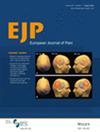Prevalence of Painful Temporomandibular Disorders and Overlapping Primary Headaches Among Young Adults
Abstract
Background
Large population-based estimates of the prevalence of painful temporomandibular disorders (p-TMD) utilising standardised screening tools are scarce and have not investigated the prevalence of overlapping primary headaches. We aimed to estimate the prevalence of p-TMD in a large population of young adults (18 to 23 years) and to estimate the co-occurrence of p-TMD and two primary headaches, migraine and tension-type headache (TTH). The study also aimed to examine the extent of psychological (PHQ-4) and physical (PHQ-15) comorbidities and report prevalence across three gender categories (women, men and other).
Methods
Survey data from the Danish National Birth Cohort were collected (n = 11,982), in a cross-sectional observational design. A sensitivity analysis was conducted to address participation bias, revealing minimal impact on the estimates.
Results
The overall prevalence of p-TMD was 26.4% with gender-specific prevalence of women: 31.5%, other: 39.2% and men: 16.8%. Among those with p-TMD, 80.5% reported headaches at least once a month, and 13.8% over 15 days monthly. For the p-TMD individuals with a medical headache diagnosis, 31.9% experienced TTH and 10.9% migraine. The study also identified a higher proportion of moderate/severe psychological distress and physical symptoms in the p-TMD group compared to the non-p-TMD group. Logistic regression revealed a positive association between PHQ-4 and p-TMD, modified by gender (p = 0.016).
Conclusions
High overall prevalence of p-TMD and overlapping primary headaches was found in young adults. In addition, the study reports gender-specific associations between p-TMD, psychological distress and physical comorbidities indicating that this association is stronger for men than for women.
Significance Statement
This study found a higher-than-expected prevalence of painful temporomandibular disorders in young adults. It is based on a large population cohort and used standardised and validated screening tools. The study also reported common co-occurrence of primary headaches and explored gender differences. The study raises awareness for a possibly underestimated health burden in young individuals, particularly among individuals experiencing psychological distress and multiple physical symptoms.


 求助内容:
求助内容: 应助结果提醒方式:
应助结果提醒方式:


